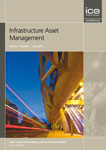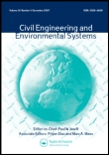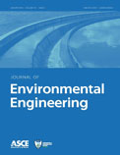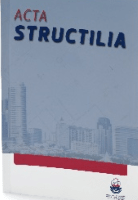
Infrastructure Asset Management
Scope & Guideline
Elevating knowledge on infrastructure management and sustainability.
Introduction
Aims and Scopes
- Sustainable Infrastructure Management:
The journal emphasizes research on sustainable practices in the management of infrastructure assets, addressing environmental impacts and promoting eco-friendly materials and methods. - Risk Management and Decision-Making:
A core focus is placed on risk management strategies and decision-making processes in infrastructure projects, utilizing analytical and simulation-based methods to improve outcomes. - Digitalization and Automation:
There is a strong emphasis on integrating digital technologies and automation in infrastructure management, exploring the use of AI, machine learning, and data analytics to optimize asset performance. - Lifecycle and Economic Assessment:
The journal covers economic models and lifecycle assessments of infrastructure projects, aiming to provide frameworks for evaluating costs, benefits, and efficiencies over time. - Stakeholder Perspectives and Governance:
Research often explores the roles of various stakeholders in infrastructure projects, emphasizing governance, community engagement, and the social implications of infrastructure decisions.
Trending and Emerging
- Artificial Intelligence and Machine Learning:
There is a significant increase in research exploring the application of AI and machine learning in infrastructure asset management, indicating a trend towards leveraging advanced technologies for predictive maintenance and optimization. - Sustainability and Climate Resilience:
Emerging themes related to sustainability and climate resilience are becoming more prevalent, as researchers investigate how infrastructure can adapt to climate change and promote environmental stewardship. - Digital Transformation and Smart Infrastructure:
The rise of digital transformation initiatives within infrastructure management is evident, with a growing number of studies focusing on smart infrastructure solutions, IoT applications, and digital twins. - Community Engagement and Social Impact:
Research highlighting the importance of community perspectives and social impacts of infrastructure projects is gaining traction, reflecting a broader recognition of the need for inclusive decision-making. - Complex Project Management and Governance:
There is an increasing focus on managing complex infrastructure projects and governance frameworks, addressing the challenges posed by mega-projects and the need for effective stakeholder collaboration.
Declining or Waning
- Traditional Infrastructure Design:
There has been a noticeable decrease in publications focused solely on traditional infrastructure design methods, as the field is shifting towards more integrated and innovative approaches that incorporate sustainability and technology. - Basic Asset Management Practices:
Basic asset management practices that do not leverage advanced methodologies or technologies are becoming less prominent, as the journal increasingly favors research that incorporates sophisticated analytical frameworks. - Historical Infrastructure Analysis:
Research centered on historical analysis of infrastructure development is waning, potentially due to a growing emphasis on current practices and future-oriented strategies that address contemporary challenges.
Similar Journals

Journal of Infrastructure Policy and Development
Fostering collaboration for effective infrastructure development.Journal of Infrastructure Policy and Development, published by ENPRESS PUBL LLC, is a pivotal academic journal dedicated to advancing knowledge in the fields of development, public administration, and urban studies. With its ISSN 2572-7923 and E-ISSN 2572-7931, this journal provides a critical platform for researchers and professionals to disseminate their findings on infrastructure policies and their implications for sustainable development. Since its inception in 2017 and continuing through 2024, the journal has garnered recognition within various academic categories, achieving Q3 rankings in Development and Public Administration, as well as Q2 in both Social Sciences (miscellaneous) and Urban Studies for 2023. Despite its emerging status, the journal ranks relatively well in Scopus, affirming its valuable contributions to the social sciences, particularly with a rank of #159/279 in Urban Studies. This journal is designed to foster interdisciplinary discussions and serve as a resource for professionals and students alike who are engaged with the evolving landscape of infrastructure policy. Explore the insights within its pages to stay abreast of transformative ideas and practices shaping the future of our communities.

CIVIL ENGINEERING AND ENVIRONMENTAL SYSTEMS
Pioneering Insights for Modern Engineering PracticesCIVIL ENGINEERING AND ENVIRONMENTAL SYSTEMS, published by Taylor & Francis Ltd, is a pivotal academic journal dedicated to advancing the field of civil and structural engineering as well as environmental systems. With its ISSN 1028-6608 and E-ISSN 1029-0249, this journal serves as a crucial platform for disseminating high-quality research from 1998 through 2024. Recognized in the Scopus Ranks as #177 out of 379 in its category, equating to a 53rd percentile ranking, it holds a respectable Q3 category designation in Civil and Structural Engineering for 2023. The journal aims to bridge theoretical research and practical applications, showcasing innovative approaches and solutions to contemporary engineering challenges. Scattered across its pages are valuable insights from both emerging and established experts, making it an essential resource for researchers, professionals, and students seeking to enhance their understanding and impact within the civil engineering and environmental systems landscape. While it does not offer open access, the journal is part of a well-regarded publishing legacy, ensuring rigorous peer review and editorial standards that contribute meaningfully to academia and industry alike.

Sustainable and Resilient Infrastructure
Building Tomorrow: Innovating Sustainable InfrastructureSustainable and Resilient Infrastructure, published by TAYLOR & FRANCIS LTD, is a premier journal dedicated to the advancement of knowledge in the fields of building and construction, civil and structural engineering, and geography, planning, and development. Since its inception in 2016, this journal has established itself with an impressive Q1 ranking in multiple categories, reflecting its commitment to high-quality research and innovative practices. It occupies a distinguished position in Scopus with robust rankings across various engineering and social sciences fields, making it an essential publication for researchers and professionals aiming to address contemporary challenges in infrastructure sustainability and resilience. Although it is not an open access journal, it provides a platform for critical discussions on safety, risk, reliability, and quality in engineering, further enhancing its relevance in the academic community. As it converges on its 2024 goals, Sustainable and Resilient Infrastructure continues to be a pivotal resource for those engaged in building a sustainable future.

Innovative Infrastructure Solutions
Empowering Tomorrow's Infrastructure Innovations.Innovative Infrastructure Solutions is a leading academic journal published by Springer International Publishing AG, focusing on pioneering advancements in the fields of building and construction, civil and structural engineering, and environmental engineering. With an impact factor that reflects its significant role in the academic community, this journal serves as a vital platform for researchers, professionals, and students to disseminate groundbreaking studies and novel methodologies spanning diverse engineering disciplines. Since its inception in 2016, Innovative Infrastructure Solutions has steadily positioned itself within the Q2 category across several fields, including geotechnical engineering and engineering geology, as recognized in the 2023 quartiles. This reputable journal, accessible from Switzerland, not only emphasizes collaboration and knowledge exchange but also empowers innovators in infrastructure development globally. Whether you're contributing to a research project or seeking the latest findings, Innovative Infrastructure Solutions remains essential for anyone invested in advancing sustainable infrastructure solutions.

JOURNAL OF MANAGEMENT IN ENGINEERING
Leading the Conversation in Engineering and Management Excellence.JOURNAL OF MANAGEMENT IN ENGINEERING, published by the ASCE-AMERICAN SOCIETY OF CIVIL ENGINEERS, stands as a premier platform for scholarly discourse at the intersection of engineering and management. Established in 1985 and converging through the years to an influential peer-reviewed outlet, this journal fosters innovation and research excellence across a multitude of fields including Engineering, Industrial Relations, Management Science and Operations Research, and Strategy and Management. With an impressive impact factor and consistently ranking in the Q1 category for its pertinent disciplines, it is recognized not only for its rigorous standards but also for its ability to shape practices and policies relevant to both academia and industry. Authors and readers benefit from the journal’s broad reach, as indicated by its high Scopus rankings: notably, it ranks in the 99th percentile for Industrial Relations and maintains a strong presence within Management Science and Decision Sciences. Although it does not offer Open Access, the high caliber of research published herein makes it a must-read for researchers, professionals, and students aiming to stay at the forefront of the evolving landscape of engineering management.

COMPUTER-AIDED CIVIL AND INFRASTRUCTURE ENGINEERING
Elevating Engineering Standards with Computational InsightsCOMPUTER-AIDED CIVIL AND INFRASTRUCTURE ENGINEERING, published by WILEY, stands as a leading journal in the domains of civil and structural engineering, computational theory, and computer-aided design since its inception in 1986. With an impressive ISSN of 1093-9687 and E-ISSN of 1467-8667, this esteemed UK-based journal holds a prestigious position in the academic community, reflected by its Q1 ranking in numerous relevant categories, including Civil and Structural Engineering and Computer Graphics as of 2023. The journal is renowned for promoting innovative research that utilizes computational techniques to solve complex engineering problems, making it an essential resource for researchers, professionals, and students alike. Despite its lack of open access options, the journal garners significant interest due to its rigorous peer-review process and high-impact articles, underlining its importance in the advancement of infrastructure engineering practices and technologies. With a Scopus ranking placing it among the top journals in various engineering and computer science fields, COMPUTER-AIDED CIVIL AND INFRASTRUCTURE ENGINEERING continues to foster knowledge and collaboration, ultimately contributing to the future of smart and resilient infrastructure development.

JOURNAL OF ENVIRONMENTAL ENGINEERING
Exploring innovative pathways to environmental sustainability.JOURNAL OF ENVIRONMENTAL ENGINEERING, published by the American Society of Civil Engineers (ASCE), stands as a pivotal platform within the realm of environmental engineering and civil infrastructure. With an ISSN of 0733-9372 and an E-ISSN of 1943-7870, this esteemed journal has been delivering high-quality research since its inception in 1973 and continues to play a crucial role in advancing knowledge through to 2024. The journal boasts respectable impact factors, achieving Q2 rankings in Civil and Structural Engineering, Environmental Engineering, and Environmental Science, while also maintaining a solid presence in Environmental Chemistry. With Scopus rankings reflecting a strong competitive advantage across various specializations, it serves as a vital resource for researchers, professionals, and students focused on solving complex environmental challenges. Though not an open-access publication, its rigorous selection process ensures that only high-caliber studies are disseminated, making it an indispensable read for anyone involved in the interdisciplinary fields linking engineering and environmental sustainability. Addressing contemporary issues and shaping future innovations, the JOURNAL OF ENVIRONMENTAL ENGINEERING remains committed to fostering dialogue and disseminating impactful research.

Acta Structilia
Connecting scholars and practitioners in construction management.Acta Structilia is an esteemed academic journal dedicated to the fields of quantity surveying and construction management, published by the University of the Free State, specifically through its Department of Quantity Surveying & Construction Management. This Open Access journal has made significant contributions to the body of knowledge since its establishment in 2010, offering widespread accessibility to its scholarly articles and promoting the dissemination of innovative research findings. Based in Bloemfontein, South Africa, it provides a platform for researchers, professionals, and students to engage with cutting-edge developments in the industry. Although current impact metrics such as the H-index are not specified, Acta Structilia aims to uphold high academic standards and relevance, fostering a rich dialogue within the construction management community. By encouraging submissions that address contemporary issues and advancements in the field, the journal stands as a vital resource for those looking to deepen their understanding and influence the future of construction practices.

Engineering Technology & Applied Science Research
Connecting Researchers to Shape the Future of Applied ScienceEngineering Technology & Applied Science Research is a distinguished open-access journal published by EOS ASSOC based in Greece, focusing on the multifaceted realms of engineering, materials science, and signal processing. Established in 2011, this journal has rapidly gained recognition, achieving a Q2 ranking in Engineering (miscellaneous) and a Q3 ranking in both Materials Science and Signal Processing for 2023, showcasing its growing impact in these critical fields. With an emphasis on disseminating high-quality research and fostering innovation, ETASR provides a platform for researchers, professionals, and students to share their findings and explore emerging technologies. The journal's Scopus rankings further reinforce its significance, positioning it strongly within the top percentiles among its peers. With a commitment to open access, ETASR ensures that research is accessible to a global audience, promoting collaboration and knowledge sharing across disciplines. Whether you are a seasoned researcher or a budding student, ETASR is an invaluable resource for advancing your understanding and contributing to the cutting-edge developments in engineering and applied sciences.

Journal AWWA
Advancing Water Science and Technology for a Sustainable Future.Journal AWWA, published by WILEY, serves as a vital platform in the fields of Chemistry and Water Science and Technology. Established in 1946 and with a rich history extending to 2024, this journal is dedicated to the dissemination of innovative research and practical insights that address the pressing challenges associated with water quality and management. Although currently not an open-access publication, it provides important contributions to a diverse audience, including researchers, industry professionals, and students dedicated to advancing knowledge in water sciences. With a respectable Q3 ranking in both the Chemistry and Water Science categories, as well as competitive Scopus rankings, Journal AWWA consistently delivers peer-reviewed articles that foster critical discussions and promote sustainable solutions within the community. The journal's commitment to excellence ensures that it remains a significant resource for those engaged in environmental science and technology.